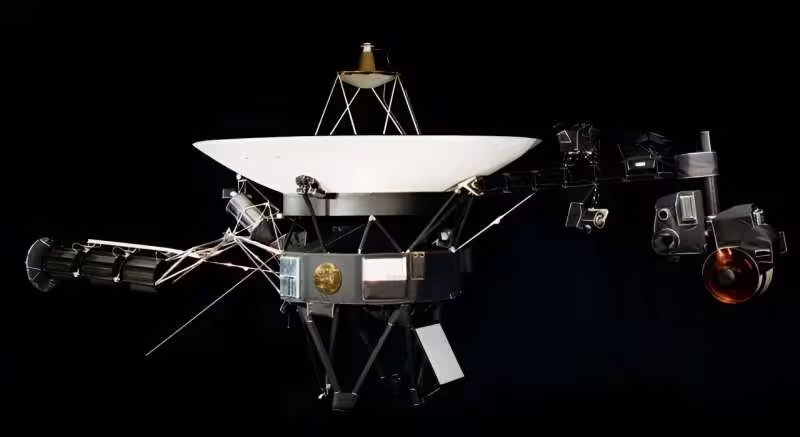Following a temporary communications failure last month, NASA’s Voyager 1 spacecraft has resumed normal operations. Despite ongoing power management issues related to the spacecraft’s age and limited power supply, the team successfully reactivated the primary radio transmitter and continued collecting data from the four active science instruments.
Voyager-1 communications restoration
NASA’s Voyager 1 spacecraft has returned to normal operations after a temporary communications outage last month. The spacecraft unexpectedly turned off its primary X-band radio transmitter and activated a weaker S-band transmitter. Because Voyager 1 is approximately 15.4 billion miles (24.9 billion kilometers) from Earth, this change made it impossible for the mission team to receive scientific data or updates on the spacecraft’s technical condition.
Reactivation of Voyager devices
Earlier this month, engineers successfully restarted the X-band transmitter and continued collecting data from Voyager 1’s four scientific instruments throughout the week starting November 18. The team is currently completing several tasks to fully return the probe to its previous operating state, including rebooting the system that synchronizes the three onboard computers.
Power management issues
When engineers turned on the spacecraft’s heater, the X-band transmitter was turned off by the spacecraft’s fail-safe system. Historically, when the fail-safe system sensed that the probe was losing power, it automatically shut down systems not required to maintain the spacecraft’s flight to save power for mission-critical systems. However, the probe had already shut down all secondary systems except the scientific instruments. So the failsafe system turned off the X-band transmitter and turned on the S-band transmitter, which uses less power.
Radioisotope thermoelectric generator
Each NASA Voyager probe is equipped with three radioisotope thermoelectric generators (RTGs), including the one shown here. X-rays provide energy to the spacecraft by converting the heat generated by the decay of plutonium-238 into electricity.
Also read – SpaceX launched 23 Starlink satellites
Voyager’s long-term operations
The mission is running at extremely low power on both Voyager probes. Fueled by the heat generated by converting plutonium into electricity, the spacecraft loses approximately 4 watts of power every year. About five years ago — nearly 41 years after Voyager’s launch — the team began shutting down all noncritical systems to keep the probes in flight, including the heaters of some of the science instruments. To the mission team’s surprise, all of these devices continued to work despite dropping below the temperature at which they were tested.
The team has computer models designed to predict how much energy different systems, such as heaters and appliances, will use. However, several factors contribute to the uncertainty of these models, including the age of the components and the fact that the hardware does not always behave as expected.
Current status of the Voyager probes
Because power levels were measured down to fractions of a watt, the team also adjusted the way both probes monitored voltage. But earlier this year, the team was forced to shut down the science instrument on Voyager 2 due to decreasing power levels. The mission shut down several instruments on Voyager 1 in 1990 to save energy, but these instruments were no longer used after the probe flew past Jupiter and Saturn. Four out of 10 scientific instruments on each spacecraft are currently used to study particles, plasma and magnetic fields in interstellar space.
Voyager 1 and Voyager 2 have been flying for over 47 years and are the only spacecraft operating in interstellar space. Their advanced age means increased frequency and complexity of technical problems and new challenges for the mission engineering team.













